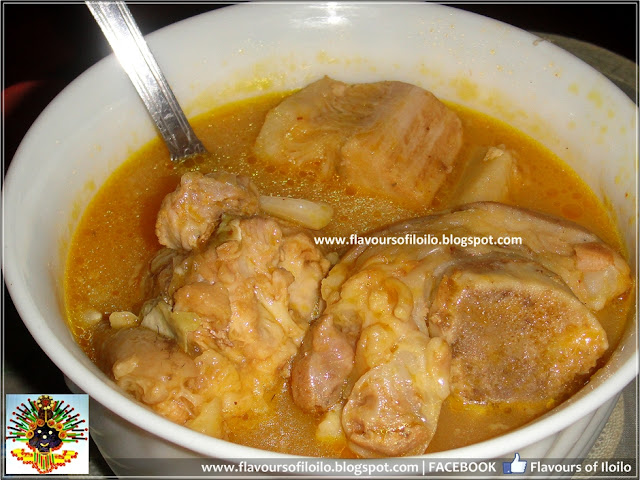It was a typical fiesta scene in a barrio that I got to taste this cholesteroliffic and delicious pork dish.
I can still vividly remember that decades old gastronomic memory - very tender and almost fall of the bone pata, vivid orange sour and sticky broth, large chunks of unripe langka; all in one big large kaldero!
And it's been really a while since I've tried to recreate that taste memory and a few days ago, it was worth another try.
Here's my simple recipe for Pata Lauya
- 2 kilos pata (see notes below)
- Unripe Jackfruit, large chunks/cubes, just proportion it with the pata
- 1 table spoon Achuete powder, adjustable
- 6 pcs Batwan or any souring fruit or broth cubes/powder
- 2pcs Siling pansigang
- Water,enough for boiling
- 1/2 table spoon Salt, adjustable
- Wash and clean pata.
- In a large pot, place pata, salt and enough water then boil until tender. It may take 45 minutes to an hour for regular boiling and less time when pressured cooked.
- When tender, add jackfruit and boil until the langka becomes tender too. Make sure the langka is tender before adding souring ingredients.
- Add batwan and boil it under the broth becomes sour enough according to your taste.
- Add achuete powder and mix thoroughly, You can add more to get the desired hue of the broth.
- Add siling pansigang and make adjustments (souring, saltiness, color, etc) and remove from heat
- Serve with rice.
For the remaining pata parts, you can make it into Paksiw na Pata.



